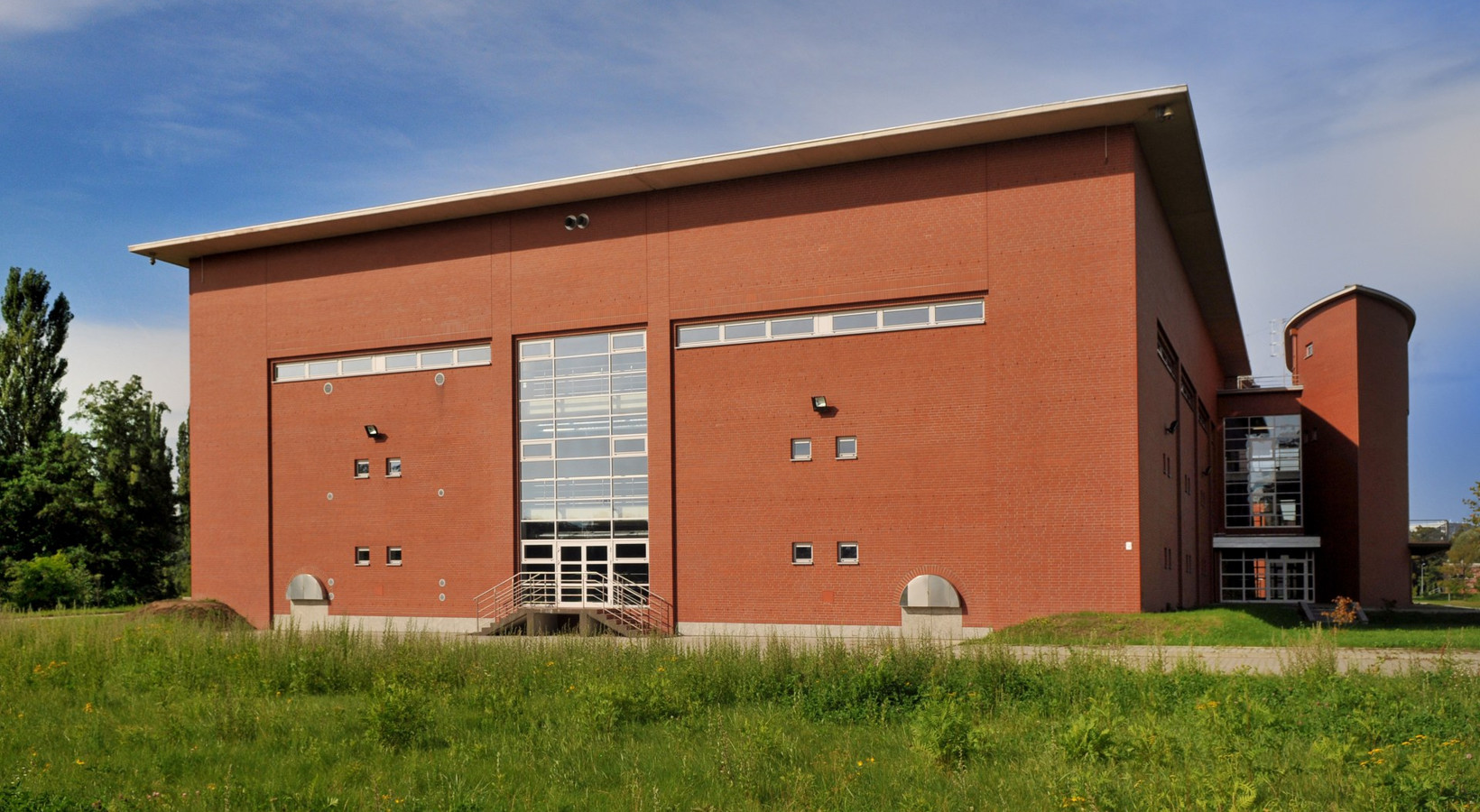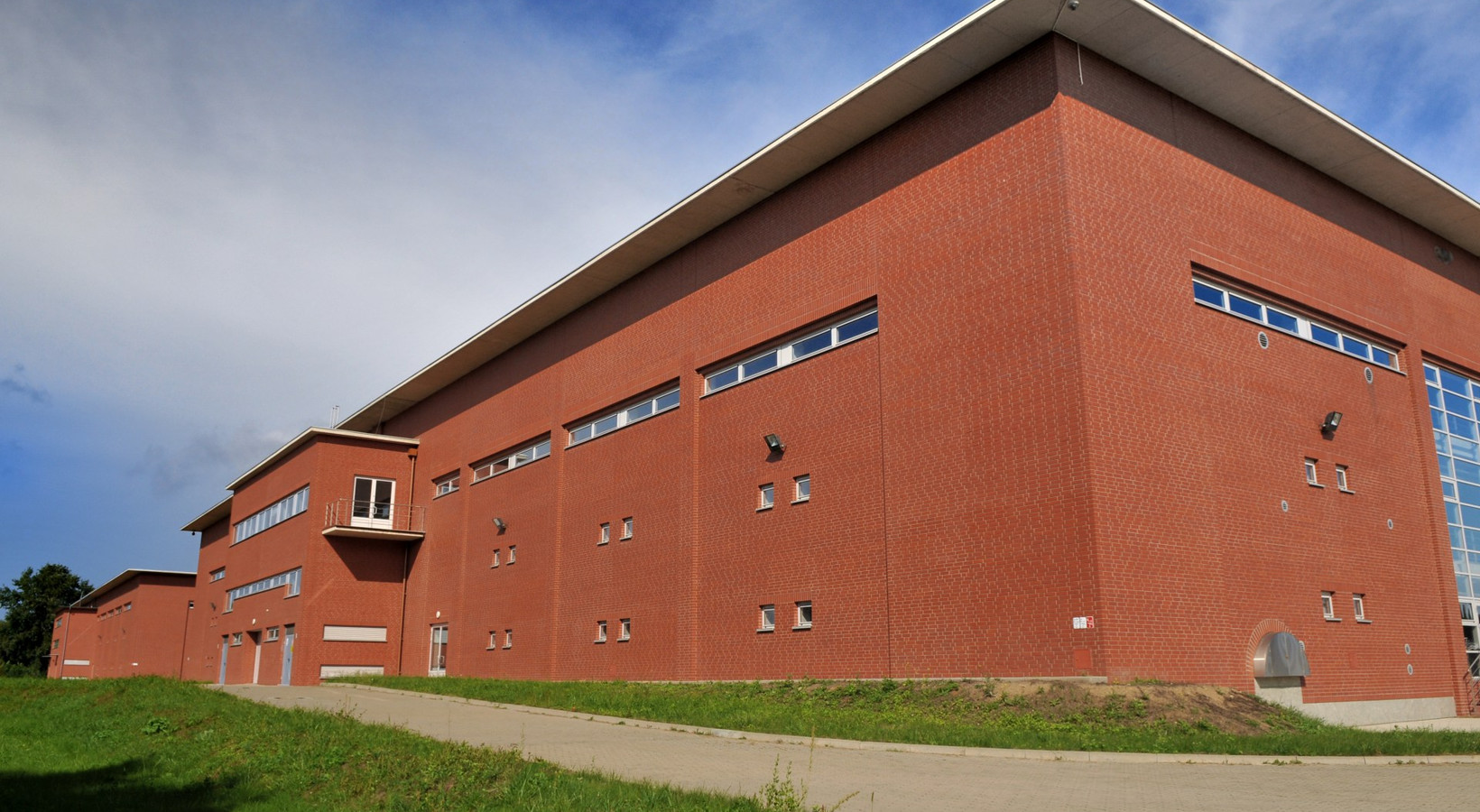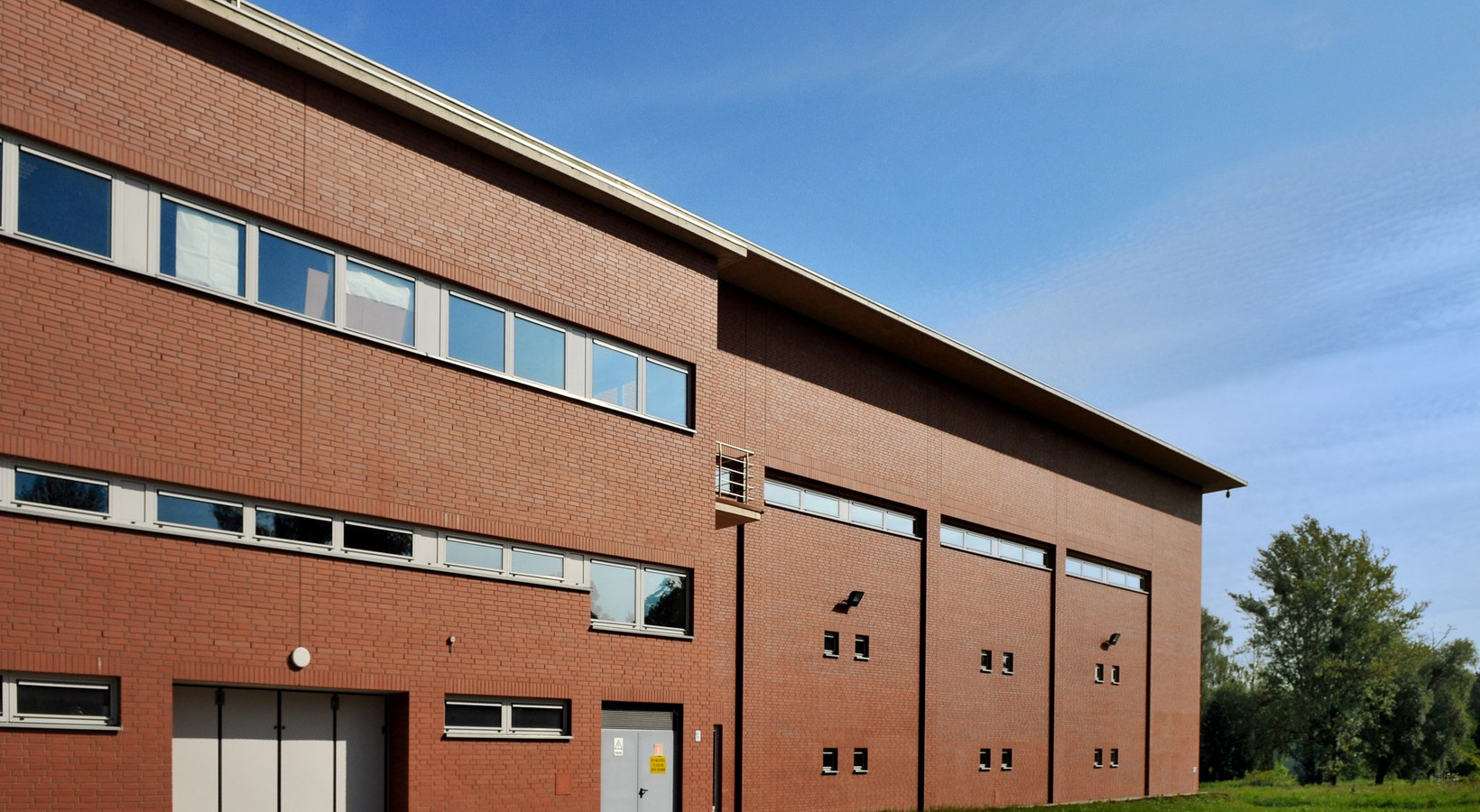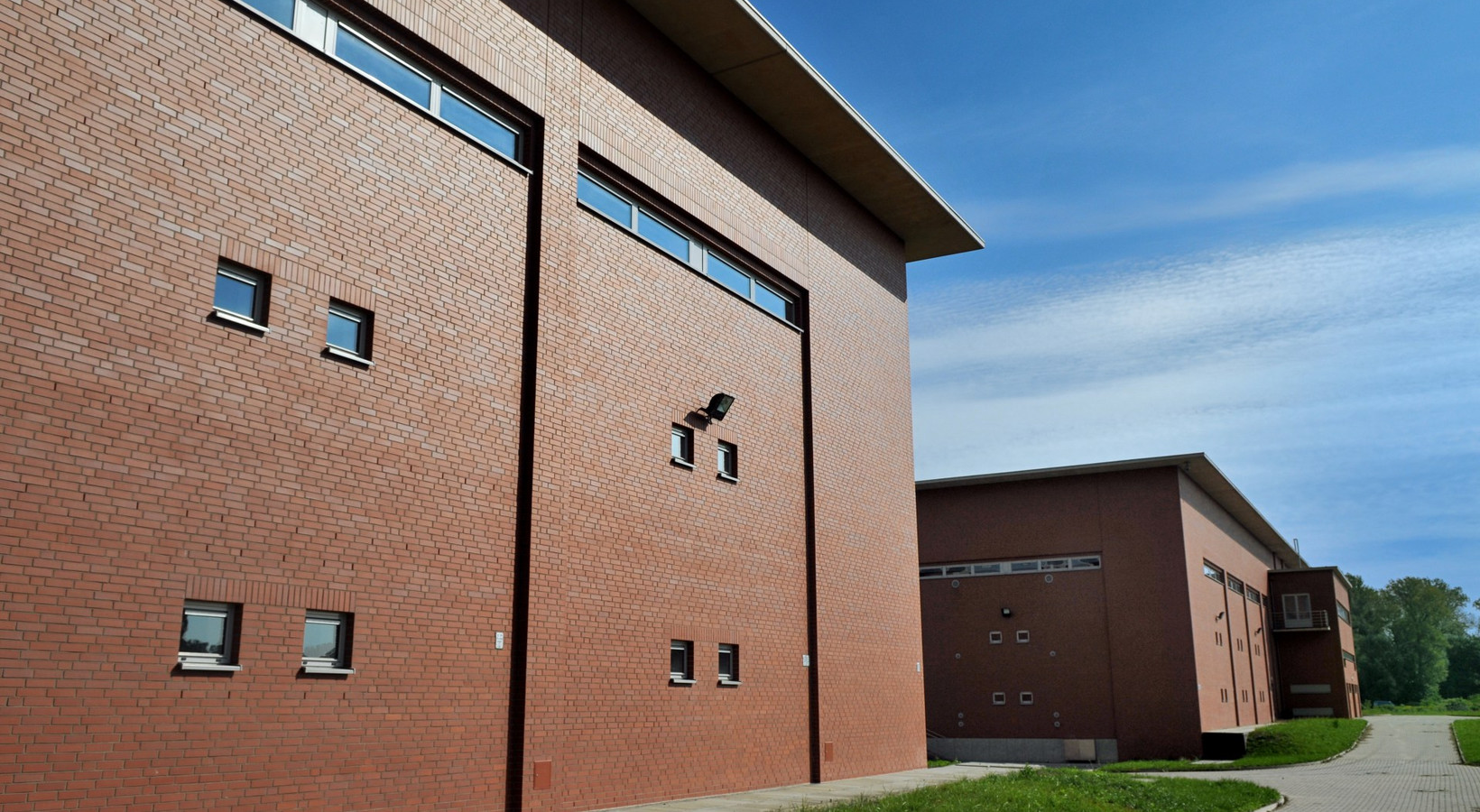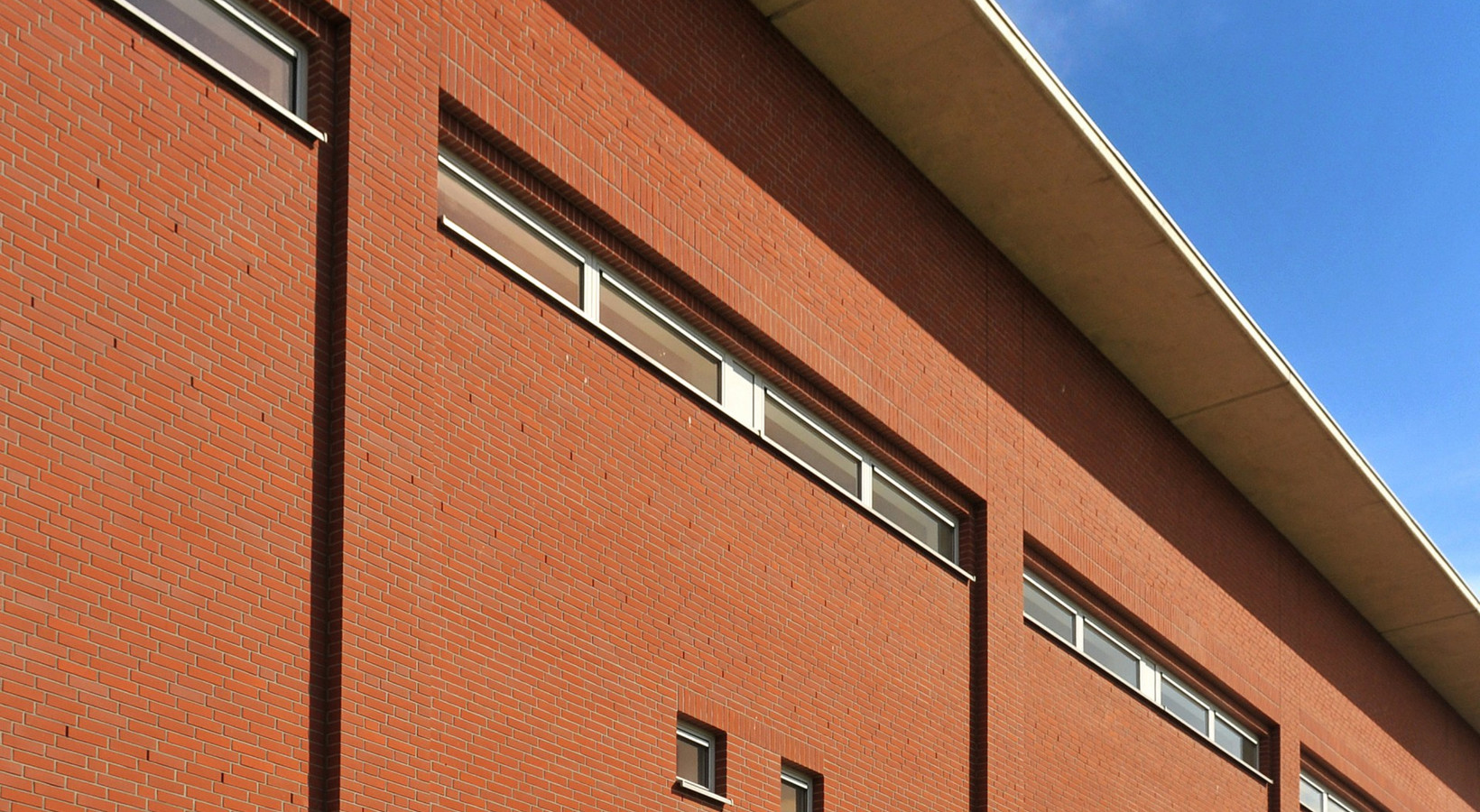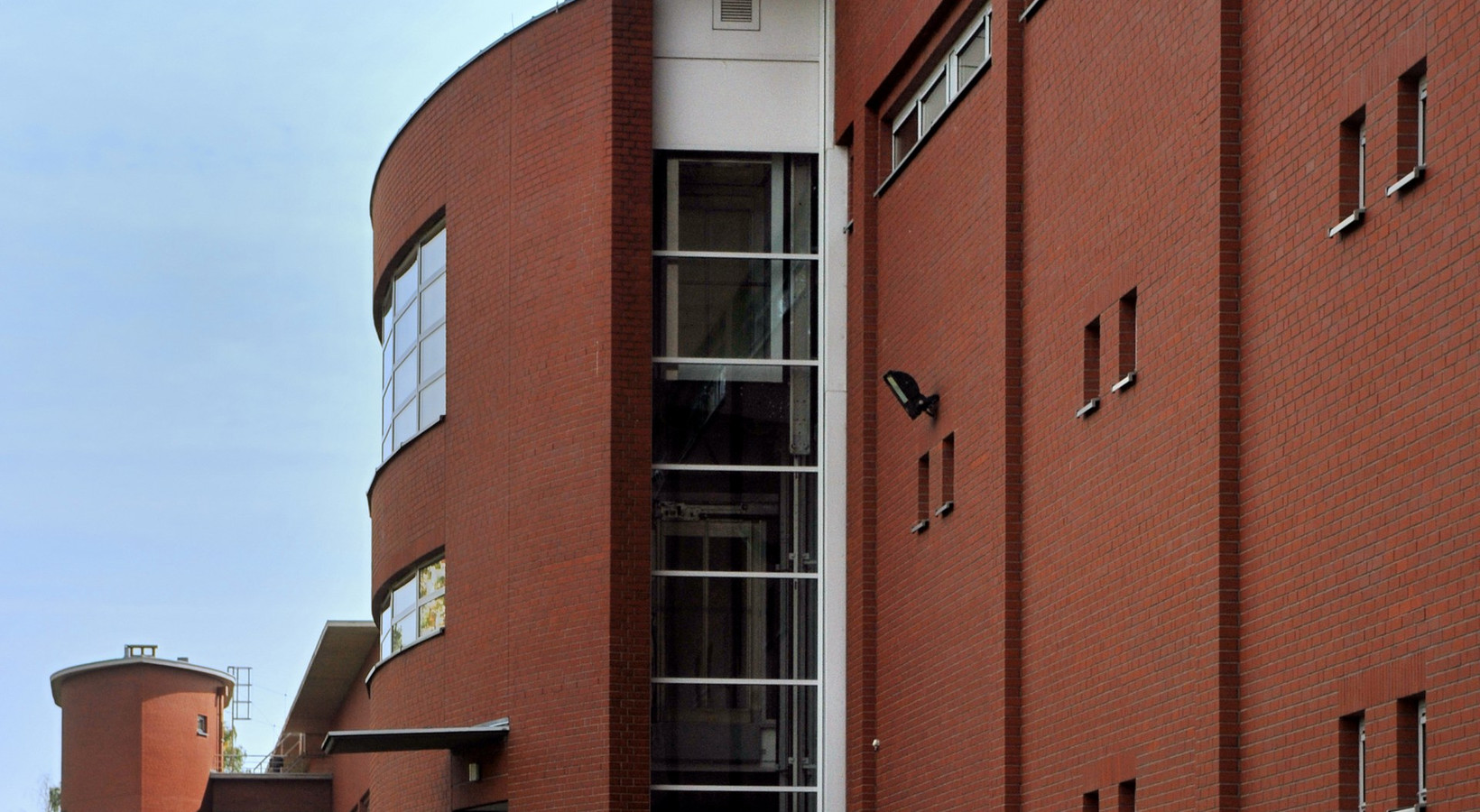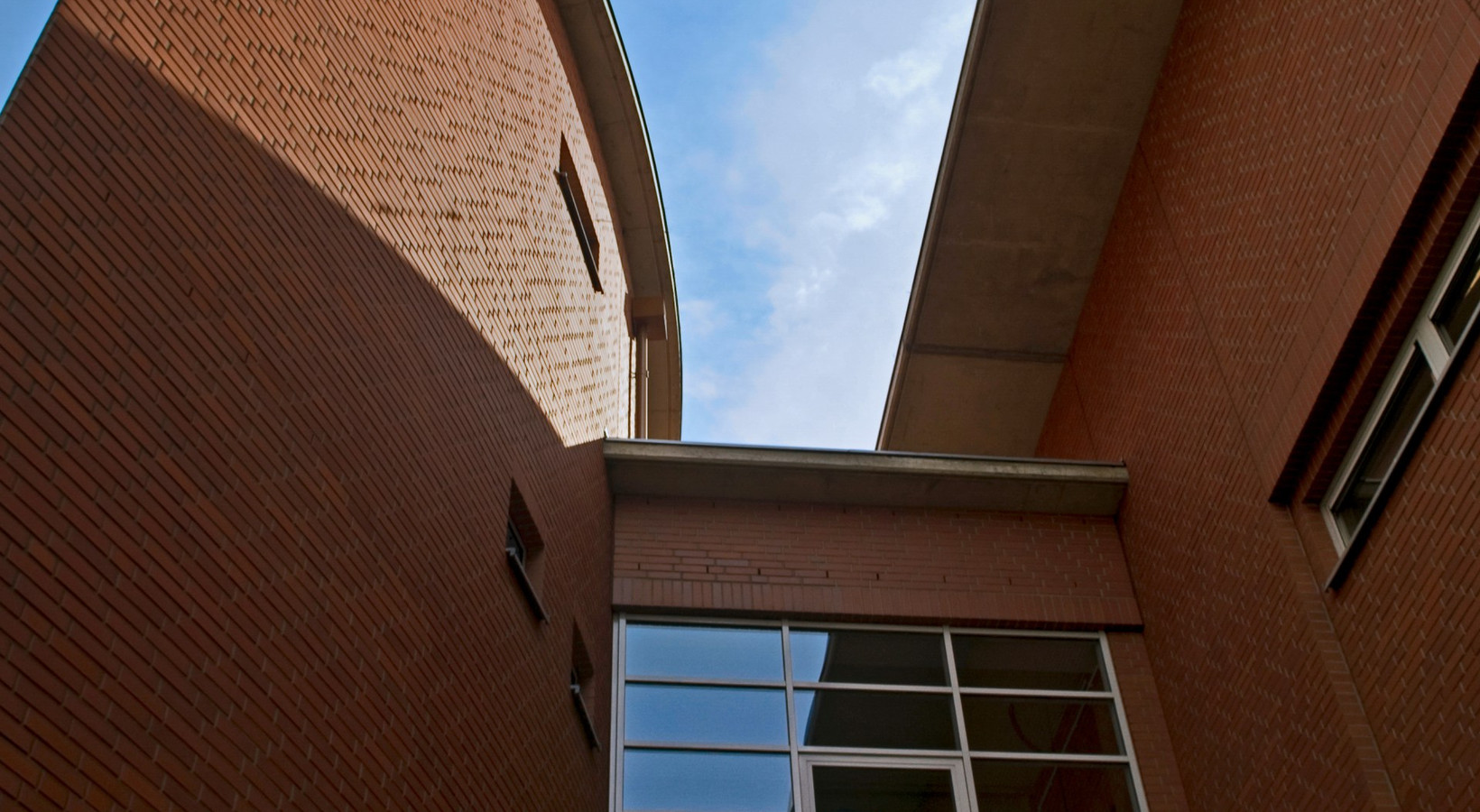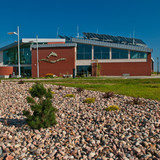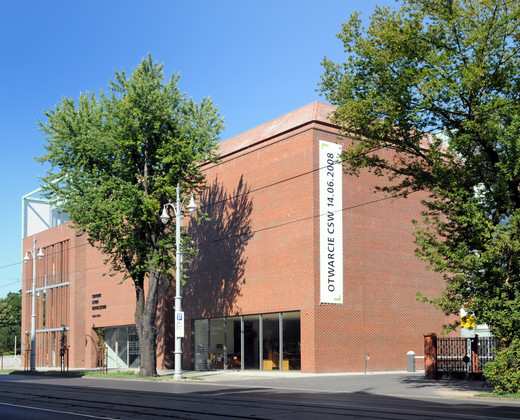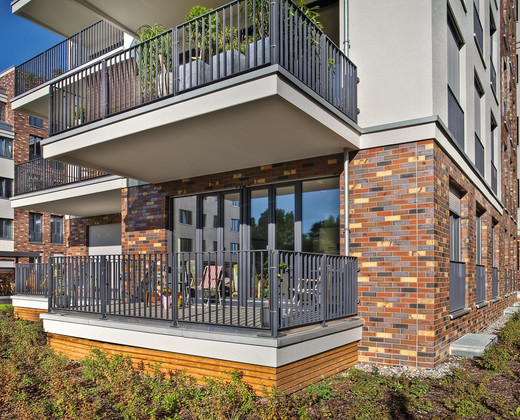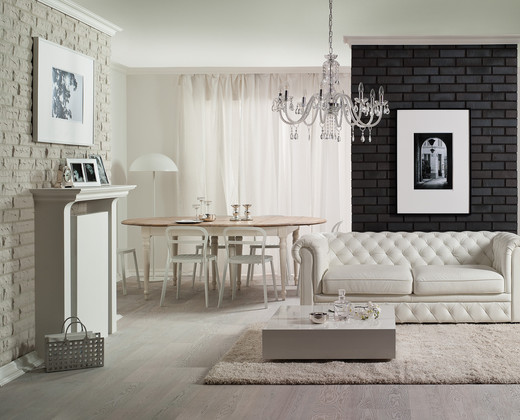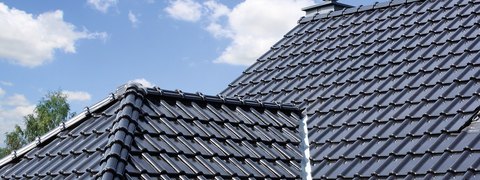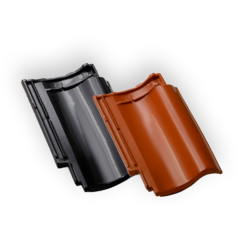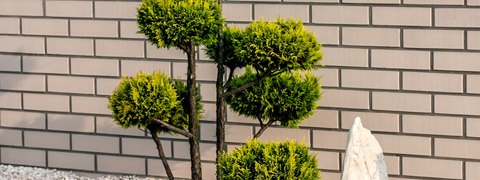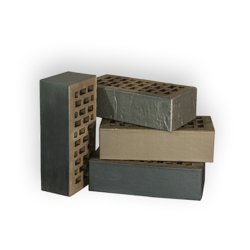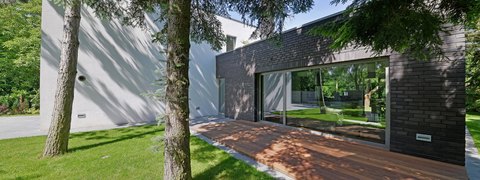Water Treatment Plant in Wrocław Beauty and harmony with attention to detail
When designing buildings that have a significant impact on the city life, a lot of attention has to be paid to their durability and usability. However, it rarely happens that a technological object is developed and built with such attention to detail as the water treatment plant at the Na Grobli street in Wrocław.
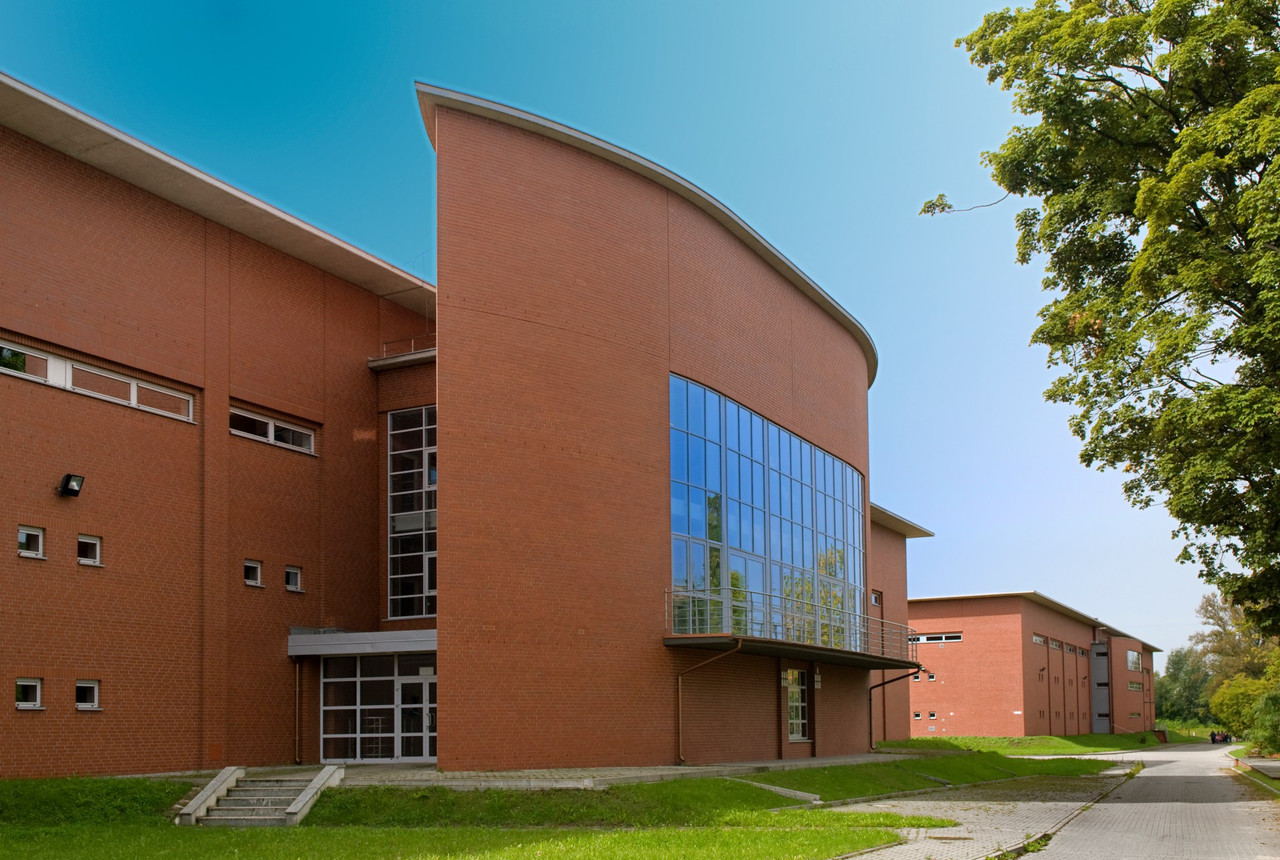
Modernization of the old Water Treatment Plant for the city of Wrocław at the Na Grobli Street, located in the fork of the Oder and Oława rivers, is one of the most important investments of the Wrocław Municipal Water and Sewage Company. The value of the project, co-financed by the European Union from the ISPA Fund, amounted to approximately PLN 100 million. As part of the extension of the facility completed in 2007, two modern, maintenance-free, technology-saturated buildings were constructed: carbon filters and sand filters (fast). Owing to them, the quality of water supplied to the greater part of Wrocław has significantly improved.
Durability above all
Marek Szurlej, an architect from Wrocław, is the author of the design for the land development and the sand filter building. The building of carbon filters was designed by Ryszard Sobolewski. Architects subordinated the concept of expanding the complex to its function, both in terms of architecture and building materials. The main criterion for the selection of technologies and raw materials was the guarantee of longevity, durability, resistance to moisture and negative weather conditions. The internal structure, dredging tanks and rapid filter chambers were made of tight concrete. The external structure is a concrete skeleton with a ceramic wall constructed in traditional technology. The objects have impressive sizes – the sand filter building is 103.6 m long, 35 m wide and 13.6 m high, and the total cubature is about 65,000 m3. The neighboring carbon filters buildings, with a volume of approximately 55,000 m3, has external dimensions of 88.6 mx 35.0 mx 13.6 m. These are four-storey blocks with one underground storey. The buildings constitute closed technologies and are self-sufficient in terms of the functions they are to perform. Inside, there are open chambers of filters and water tanks together with rich technology. The heart of each facility is a centrally located pumping station with the power supply system in the form of transformer stations.
Pre-war inspirations
The use of bricks on the façade arises not only from the fact that it is one of the most durable materials known. Bricks were also selected due to the concept of harmonizing new buildings with historical ones, and the majority of the buildings related to the water supply devices in Wrocław are bricked. One of them is the Water Tower, built in 1871, one of the most famous European monuments of industrial architecture. The objects of the Na Grobli complex – the tower designed by Lindley and the old pumping station preserved to this day – were also implemented in the clinker wall technology. The architects created the filters buildings referring to their nature and the monumental German architecture of the 30's and 40's. Both buildings are covered with flat roofs and have a compact cuboid shape, devoid of architectural details. This regular shape is broken only by semi-circular planes where the entrances to the buildings are located. A glazed part of the staircase, adding lightness to the massive buildings, constitutes the link between the curved entrance part and the main body. A very large wall area is divided into similarly sized modules. Each of them contains small, spaced windows, the size of which clearly contrasts with the large surface of the walls. The windows are located in the upper part of the building to provide the rooms with natural light, but they deliberately have such a small area. Daylight adversely affects the water treatment process because it is conducive to the development of microorganisms.
Precise finish
The façades of both buildings were bricked using about 500,000 red clinker bricks in the Polish dimension (250 x 120 x 65 mm), which is unusual for the material manufacturer – Röben. The flexibility and adaptation of the company to the requirements of the perfectly refined design allowed to avoid cutting bricks and facilitated the implementation of the investment. The bricks were laid with the use of a special mortar for clinker, in a full joint, which minimized the risk of efflorescence on the masonry. Due to the smooth surface of the façade, the protection against the washing out of the mortar during the rain became an important issue. This is provided by 1.5 m wide cornices that surround the building along its entire length. The surface of the walls, despite the large size, does not seem uniform. Bricklaying in the wild bond provided the façade with dynamics and volatility. The properly arranged dilatations prevent cracking of clinker, even though the walls are subjected to heavy loads and work hard. Adequate ventilation of the wall is ensured by air gaps that are located above the windows and exhaust gaps under the cornice. Air circulation is also supported by professionally spaced empty joints. The façade of the Na Grobli filters is a model example application of all the rules of the masonry art, which guarantees durability, aesthetics and longevity.
Quality of water – quality of life
The Water Treatment Plant at the Na Grobli street is currently one of the largest and most modern water facilities in Poland. In addition, it is of strategic importance for the city because it supplies the majority of residents with water, including the center and north-east of Wrocław. The plant works on the basis of groundwater (infiltration), which has better properties than surface water. Modernization of the complex has contributed to real improvement in the quality of life of many inhabitants of Wrocław, as the supplied water is healthy and tasty.
